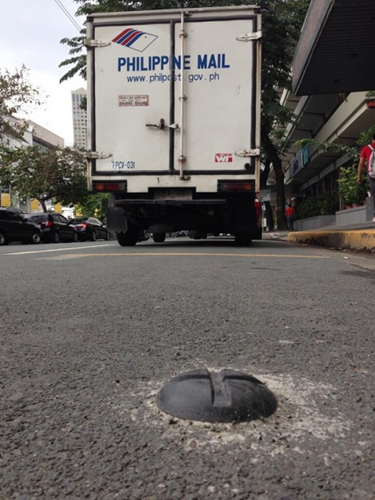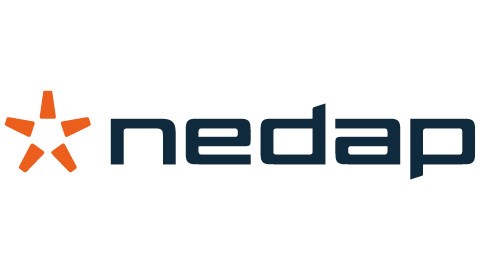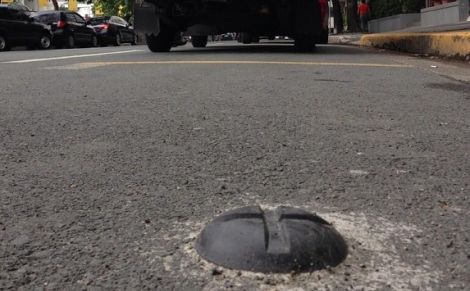
Making the right decision
Wireless sensor networks for parking detection have created a lot of buzz and discussion in the global parking industry since their introduction back in 2006. Nedap has always been at the forefront of this industry trend and as one of the leading manufacturers of these sensors. We have always been firm believers in the good that they can do for parking related applications in cities, airports, commercial centers and other environments with a lot of vehicle presence and many parking movements.
But we do understand that decision makers in the parking industry do not just take our word for it. Mayors, traffic commissioners, parking managers and other stakeholders very often ask us if there really is a solid business case for deployment of wireless sensors in the floor of each and every parking bay of the zone that needs to be monitored. Nedap believes strongly in its system and the benefits that it can bring. Let's explore this topic a little and please keep in mind that the statements in this article are supported and acknowledged by vendor neutral parking consultancy firms and are also a result from real life experience in the projects we have done so far.
What do parking sensors offer?
Before we really look into the benefits of wireless parking sensors, it is important to understand what sensors exactly do. Each sensor in our SENSIT system monitors the presence of a vehicle in the parking bay it is installed in. It knows if there is a car or not. And it also knows how long the car has been parked there. Through the wireless network this information is sent to the SENSIT server. The occupancy status and parking duration information is made available from that (cloud based) server to applications. Typical applications are:
- Guidance - Inform motorists where they can park their car using displays and apps.
- Enforcement - Know who is parked longer than was paid for (or is allowed) and take necessary measures.
- Reporting - Keep track of utilization and other developments to help make future decisions or.
So in essence we know the current parking situation and have insights in past parking situations. Therefore, we can influence motorists' behavior and find the correct arguments for our own decisions as parking managers. But what does that really bring us?
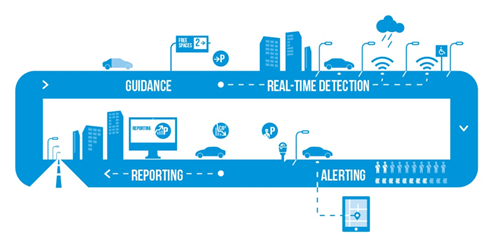
Wireless parking sensor benefits
Traffic flow and customer satisfaction
One of the first things that come to mind is the optimization of traffic flow. It is reported often that in average cities an estimated percentage of between 25% and 35% of all traffic consists of vehicles with drivers that are looking for a parking bay. If that percentage could be decreased just a little, it would have an enormously positive effect on the throughput of traffic in that city. That same concept of course also applies to airports, industrial estates and campuses.
Drivers and their passengers spend less time in the car and can spend more time on other things. In a city many visitors with cars come there to shop. Or do business. Less time spent in cars means a decrease of opportunity costs.
Research in airports and cities indicates that stress levels of visitors are correlated to their overall satisfaction in general and retail spending specifically. Frustrated and stressed drivers are less likely to enjoy the services and environment of the city or airport that they are visiting. Helping them find an empty parking bay might easily increase their satisfaction. Happier visitors usually are more willing to spend and are more likely to return. More spending means more income for retailers. More income for retailers means better occupation of retail areas and income for the property owners.
Reduced emissions
Cars that are looking for a parking bay cause unnecessary emission. In this day and age with environmental objectives for governments and public institutions that is something that is of concern to many of us. Preventing unnecessary traffic reduces emission levels and help cities and airports to conform to legal requirements governing air pollutants released into the atmosphere.
Optimized utilization
Currently installed projects have proven that properly installed parking sensors that feed a properly working guidance system can significantly increase the utilization of a parking lot. An installation in France has shown that the number of parking occupancy events in one bay almost doubles on average, which means that more cars than before have used that specific bay.
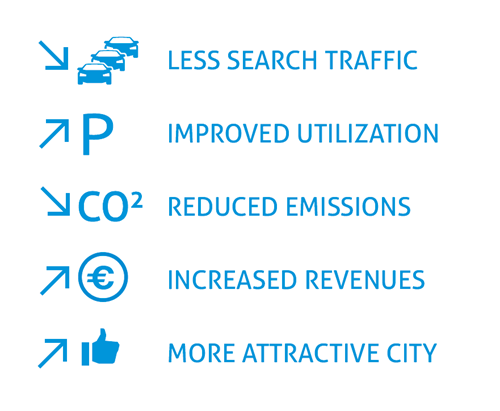 Improving parking utilization
Improving parking utilization
By hosting more cars than before the capacity of the parking lot grows or is getting utilized better, that is a matter of perception. But the result is the same: there is less need to invest in very expensive and space consuming parking bays. Parking bays easily cost between 10.000 and 30.000 Euro to create and make available to the public. By optimizing the utilization the parking operator wins in two ways: he makes more money and prevents unnecessary investments being made.
Revenue management
Parking bays in city centers and airports very often are not free of charge. Managing the revenue streams attached to parking might seem a little public unfriendly at first. However, the reality is that more efficient and effective collection of fees might actually increase service levels related to parking or open up opportunity to decrease the cost of parking.
A number of themes can be addressed when it comes to the added value of wireless parking sensors. When you know the actual status of each parking bay and thus the real-time occupancy level, it is possible to:
- Apply dynamic pricing to parking and use that as a tool to potentially motivate people to drive to underused parking areas.
- Allow more flexible parking payment methods for drivers: they can for example pay extra using a mobile app when they are exceeding the parking duration that they initially paid for.
- Increase the effectiveness and efficiency of parking enforcement: it is possible to collect more fees with less enforcement officers.
- Compare the collected fees with the actual parking capacity that was measured by the sensors to identify fraud or get a better understanding of the willingness to pay for parking bays.
- Improve the willingness to pay by having sensors visibly installed in the street.
The last example is quite interesting: an installation in Italy showed an immediate increase in collected parking fees after the sensors were installed. And the surprising thing is: at the time the system was not even active yet, the sight of sensors alone was sufficient to motivate more people to start paying for their on-street parking bay.
Managing parking licenses
The SENSIT system allows you to distribute electronic licenses in a really cost effective and reliable way. The parking license app can be downloaded on an Apple or Android smartphone and personalized with a QR-code. Licenses are managed at the SENSIT server. Monitoring authorized use of parking bays for designated users (disabled people, VIP’s, residents with a permit, etc) is done with the SENSIT system.
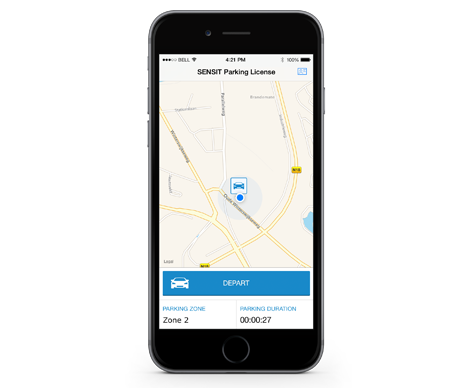
By making the distribution of the licenses electronic and by partially automating and thus optimizing the monitoring and enforcement of bays for designated users, the related processes can be carried out more efficiently and effectively: less resources are needed to provide parking capacity to the people that really need it.
Return on investment
The capital investment needed to install wireless parking sensors can be significant. Alternative financing models (leasing, rental, etc.) might bring some relief, but in the end an investment is required. Looking at all of the benefits mentioned above, it does not take a mathematician to prove that an investment in parking sensors will definitely deliver a high level of return. Exactly how much return on investment can be expected will depend on the situation and application. But Nedap is sure that in many, many cases the sensors will pay for themselves.
To prove our point we have asked third parties to help us develop an ROI calculator that illustrates the benefits of SENSIT and calculates the ROI over an investment period of five years. Typically after a period of one/ two years the SENSIT system has provided sufficient financial benefit to cover all investments and expenses related to procuring and deploying the system.
Increase the ROI
It is only possible to enjoy the value of wireless parking sensors when they are made part of well made third party systems that specialize in guidance, revenue management, enforcement or business intelligence. Nedap feels that SENSIT can be an important building block, but it remains just a building block. Cities, commercial centers and airports have their own dedicated systems for those specific purposes. The SENSIT architecture and related business model are based on the idea that we should enable our specialized partners to add their value and build strong parking management solutions for their clients. An open database, documented software interfaces based on industry standards and full transparency on system and networking performance are the proof of that.
Another potential benefit often remains untapped. Traffic guidance and parking management will definitely help to secure the flow of traffic in cities, airports and commercial real estate. Additionally managing vehicle access to the city center or certain traffic zones might even bring more benefit: only vehicles that really need to be there are allowed access, all others are denied access and are guided to zones with less restrictions. This is applied in, for example, a lot in the Netherlands, where pedestrians in the shopping areas of city centers are protected from too much traffic. Only licensed taxis, suppliers, residents, police, emergency relief vehicles or city staff are allowed access based on certain credentials (long range RFID, ANPR, etc.) and during certain time zones.
Nedap strongly believes that the mobility ambition of smart cities require many separate systems that are technically and functionally integrated in a smart way. Systems that empower each other actually will bring benefits not imaginable before.
Alternatives and substitutes
We acknowledge that it is a big decision to make when it comes to installing parking sensors in every parking bay. It requires significant investment and effort. It goes without saying that decision makers should weigh alternatives or substitutes for parking sensors.
Wireless parking sensor systems have some specific characteristics that enable them to bring all of the benefits mentioned above:
- They know the real-time status
- of every single parking bay
- at a high level of accuracy
Because of these characteristics they outperform all technological alternatives that are currently available. We believe that for effective guidance and efficient enforcement these performance characteristics are absolutely necessary. Let’s look at a few of the alternatives that are often mentioned.
Camera systems are often mentioned as an alternative. The idea is that a camera can monitor multiple spaces which would mean that less investment is required and the installation would be less intrusive. Tests and pilots however have shown that in city environments many objects will block the view of cameras. Getting sufficient view on all bays would require so many cameras, that the investment would be considerable and the result still questionable.
Sometimes vehicles equipped with ANPR cameras (license plate recognition) are mentioned as an alternative. These cars would drive around and scan all bays and capture plates. A very efficient way to deal with enforcement. But the solution is hardly real-time. The car would drive around twice or at most four times per day. The parking occupancy information would therefore be outdated very quickly and will not be suitable for guidance. Even the enforcement effectiveness can be much higher.
People in the industry often mention the use of parking payment apps as source of information: Cities know which cell phones have registered at which bays. This would provide sufficient information for guidance and enforcement. The problem with this idea is that you only know which smartphones did register. It is difficult to say which people did not register. This would make the gathered data unreliable by definition when it comes to guidance but rather useless for enforcement.
It is expected that the smart cars of the future are equipped with sensors and communication modules that would enable full sight on the use of the public traffic domain, including parking utilization. It is certain that there are many exciting things happening in the future, but can cities (and other entities) really wait another twenty or thirty years to deal with smart city traffic challenges that exist today?
The way forward
We believe in our technology and the benefits that it can bring. And being the manufacturer of sensors, that is what you would expect us to do. But you do not have to take our word for it. We have a documented ROI calculator proving our point. You are happily invited to have a critical look at it.
The decision may also not be as big as you think it is. We think it is smart to start with a small installation to test ride the technology and assess the value of the business case. If you would like to learn more about possibilities to do that, please contact us.
About Nedap Identification Systems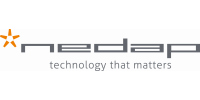
Nedap Identification Systems is the leading specialist in systems for long-range identification, wireless vehicle detection and city access control. Our readers, sensors and controllers optimize, monitor and control the movement of vehicles and people. Safe, secure and efficient. Technology that can easily be applied to security, traffic and parking applications. Cities, airports, seaports and industrial estates all are expected to be smart about mobility. Nedap enables citizens to keep moving around in a secure and convenient fashion.
Nedap Identification Systems is part of Nedap N.V., headquartered in the Netherlands. Nedap designs and develops intelligent, sustainable technological solutions for themes that are relevant to the modern society. It is Nedap’s ambition to offer ”Technology that Matters”. Nedap Identification Systems has offices in the United States, Italy, Dubai and Singapore. Its skilled business partner network is spread across the globe.



